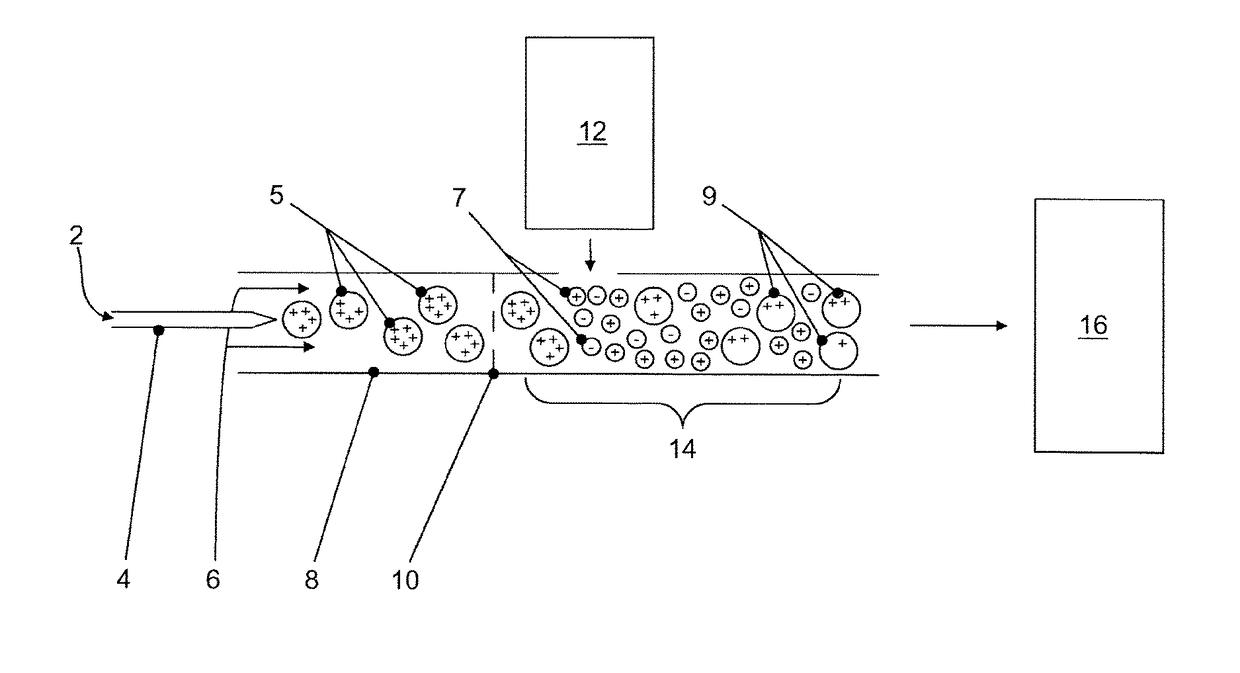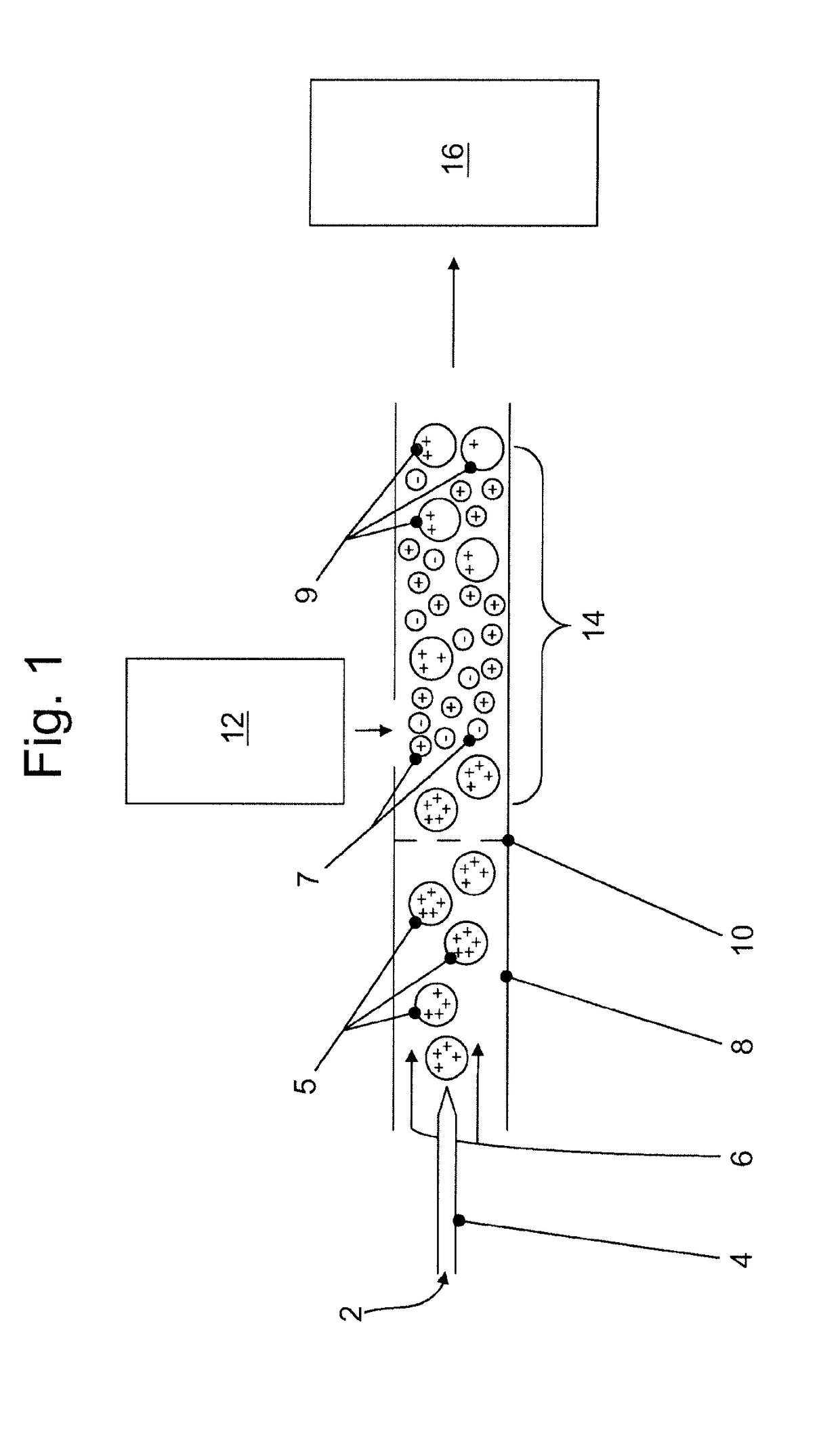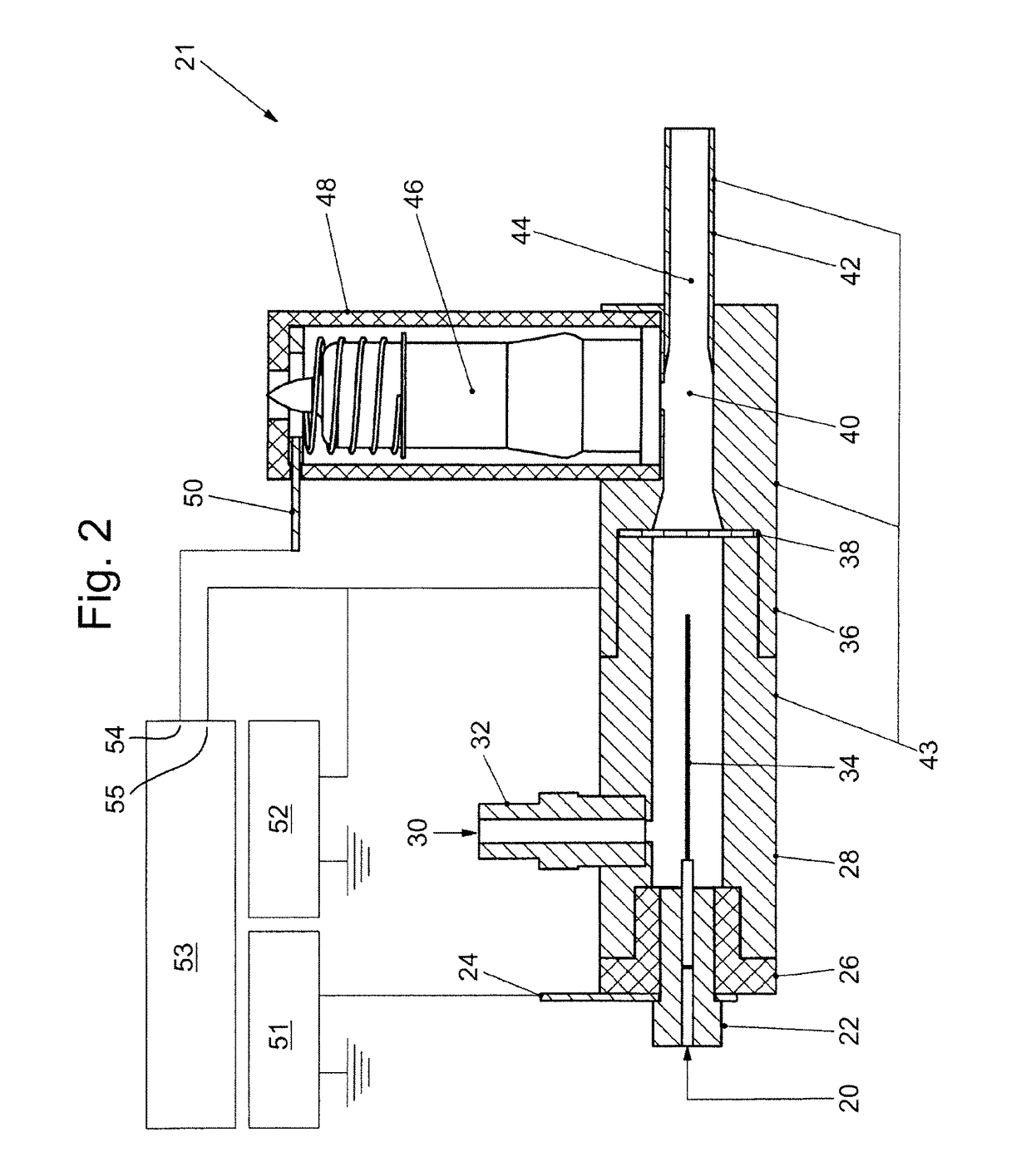Charge-stripping of multiply-charged ions
a technology of multiply-charged ions and charge-stripping, which is applied in the direction of electric discharge tubes, particle separator tubes, particle separator tube details, etc., can solve the problems of insufficient structural information provided by maldi-tof-ms, difficult to resolve and detect singly charged ions generated with maldi from large peptides or proteins, etc., to achieve the effect of promoting photoionization, eliminating transport losses, and being inexpensive and compa
- Summary
- Abstract
- Description
- Claims
- Application Information
AI Technical Summary
Benefits of technology
Problems solved by technology
Method used
Image
Examples
Embodiment Construction
[0093]Referring to FIG. 1, there is illustrated a schematic diagram for an in-source atmospheric pressure charge-stripping method for mass spectrometric analysis of samples in accordance with an embodiment of the present invention. A liquid sample (2) is introduced into an electrified sprayer (4) by which gas-phase analyte ions having multiple charges (5) are produced. The gas-phase analyte ions (5) of the present example are positively charged, though the invention may alternately be used to generate negatively charged gas-phase analyte ions. The multiply charged analyte ions (5) are swept from the electrified sprayer (4) by a flow of gas (6) through a guide (8) for guiding the multiply charged analyte ions (5) towards a downstream reaction region (14) within the guide (8). A wire screen (10) is situated within the guide (8) between the electrified sprayer (4) and the reaction region (14) to shield the reaction region (14) from the electric field of the electrified sprayer (4). Bip...
PUM
 Login to View More
Login to View More Abstract
Description
Claims
Application Information
 Login to View More
Login to View More - R&D
- Intellectual Property
- Life Sciences
- Materials
- Tech Scout
- Unparalleled Data Quality
- Higher Quality Content
- 60% Fewer Hallucinations
Browse by: Latest US Patents, China's latest patents, Technical Efficacy Thesaurus, Application Domain, Technology Topic, Popular Technical Reports.
© 2025 PatSnap. All rights reserved.Legal|Privacy policy|Modern Slavery Act Transparency Statement|Sitemap|About US| Contact US: help@patsnap.com



